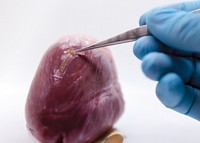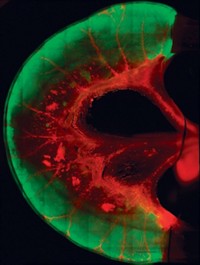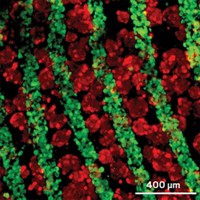Advertisement
Grab your lab coat. Let's get started
Welcome!
Welcome!
Create an account below to get 6 C&EN articles per month, receive newsletters and more - all free.
It seems this is your first time logging in online. Please enter the following information to continue.
As an ACS member you automatically get access to this site. All we need is few more details to create your reading experience.
Not you? Sign in with a different account.
Not you? Sign in with a different account.
ERROR 1
ERROR 1
ERROR 2
ERROR 2
ERROR 2
ERROR 2
ERROR 2
Password and Confirm password must match.
If you have an ACS member number, please enter it here so we can link this account to your membership. (optional)
ERROR 2
ACS values your privacy. By submitting your information, you are gaining access to C&EN and subscribing to our weekly newsletter. We use the information you provide to make your reading experience better, and we will never sell your data to third party members.
Materials
Damage Control
Combination of carbon nanofibers and stem cells can regenerate lost neurons in rats
by Bethany Halford
September 12, 2006
| A version of this story appeared in
Volume 84, Issue 38
A cocktail of carbon nanofibers and stem cells can heal neural tissue in rats damaged by a stroke, according to a recent study. Thomas J. Webster, an engineering professor at Brown University, presented the results on Sept. 11 at the American Chemical Society national meeting in San Francisco.
The report, presented during the "Advances in Nanomedicine" symposium of the Division of Colloid & Surface Chemistry, is one of the few studies to show that the in vitro regenerative healing power of nanoparticles can transfer to animals.
Working in collaboration with researchers at Yonsei University, Seoul, Webster combined neural stem cells with either hydrophobic or hydrophilic carbon nanofibers and injected the cocktail into damaged regions of the brains of rats that had suffered a simulated stroke. After a few weeks, both types of nanofibers with stem cells promoted the growth of new neural tissue. On their own, neither nanofibers nor stem cells triggered neural tissue regeneration.
Webster attributes the mixture's regenerative power to the fibers' favorable interaction with laminin, a key protein for promoting stem cell differentiation into neurons. Webster also thinks the nanofibers' ability to conduct electricity could help wire the neurons to one another.
The researchers also noticed that the hydrophobic nanofibers outperformed their hydrophilic brethren. Webster speculated that the hydrophobic fibers tend to agglomerate in biological systems and therefore don't travel to other areas in the brain. They essentially behave like anchors, he suggested, keeping the stem cells at the repair site.
Webster noted that there are hurdles to using the nanofiber and stem cell mix to regenerate neurons in people. The researchers currently harvest stem cells from the brains of neonatal rats, a technique that obviously can't be used in humans. Also, there's no biological mechanism to break down the nanofibers once the brain has been repaired. Details of the work will appear in an upcoming issue of Biomaterials.





Join the conversation
Contact the reporter
Submit a Letter to the Editor for publication
Engage with us on Twitter